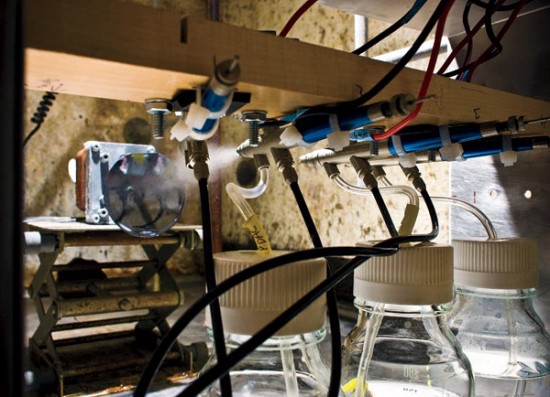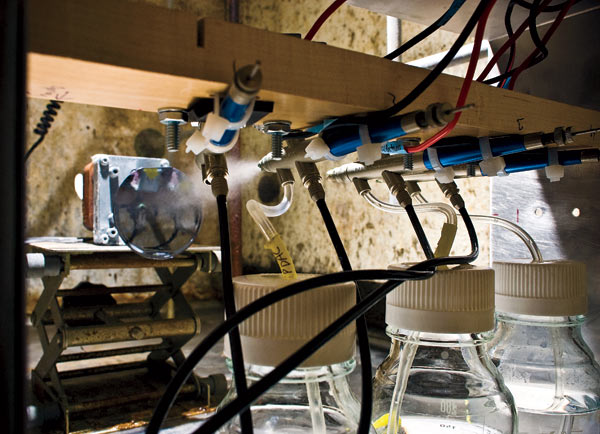Sustainable Energy
How Fuel-Cell Membranes Are Made
A new process increases the energy output of methanol fuel cells by 50 percent.

The process begins with a specially treated silicon disc, which a researcher attaches to a rotating stand in a fume hood. An automated sprayer system emits fine mists of two different polymers and a water solution in a sequence repeated several hundred times in a few hours.
